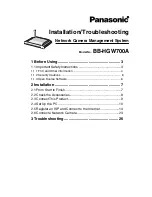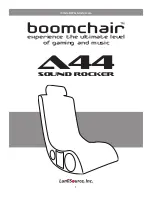
2
Copyright © 2013 Alary Design / PhotoShip One LLC -
www.PhotoShipOne.com
Phoenix A10 Introduction
The Phoenix A10 is a digitally stabilized camera gimbal system. Phoenix A10 uses brushless DC motors for
each axis of pan, tilt, and roll. Stabilization is accomplished by a 3 axis AlexMOS (Basecam Electronics)
stabilization controller. The controller receives pitch/roll/yaw attitude data from a triaxial accelerometer/gyro
sensor that is located on the final driven axis of the Phoenix. The controller then processes the data and
sends power to each motor as required. This all happens quickly at about 100,000 times a second. The
result is a smooth and stable camera platform allowing for shots that have never before been possible with
larger, bulkier SteadiCam systems.
Brushless DC Motor Drive Systems
Brushless DC motor drive systems are a relatively new
technology as they pertain to small camera gimbal systems.
The first systems were in use around the first part of 2012.
Since then great advances in the technology have occurred.
The technology is advancing so quickly that what is written in
this manual now may be outdated by the time you read it.
What is a ‘brushless DC motor drive’ (BLDC)? BLDC motors
are also known as ‘electronically commutated motors’. They
differ from brushed DC motors because they do not have
carbon brushes that rub against a commutator bar. They are
powered by a DC voltage source run through copper field
windings that are switched on/off at high frequencies. The
switching of the voltage source is done at precise intervals to
create a rotating electromagnetic field (EMF). The rotating EMF causes the magnets on the motor rotor to
attract and repel to/from the EMF. This is known as electronic commutation. The result is precise motion of
the motor output shaft/rotor. The advantage of brushless motors over brushed motors is greater power
output, higher efficiency, lower electronic noise, ability to precisely commutate, and longer motor life.
BLDC motors are desirable for camera gimbals because they can be precisely driven and fast rotation rates.
The motors on the Phoenix A10 can sustain stabilization motions up to 140 degrees per second while
maintaining 0.1 degrees resolution. This allows for extremely precise stabilization motion control of the
camera, even in harsh motion environments such as aircraft or offroad vehicle use.
The extreme precision of BLDC motors does come at a cost, however. BLDC motors as they are used in
camera gimbals suffer from lack of torque. This means the motors have difficulty in operating in a precise
manner if the camera is not precisely balanced in the camera gimbal. A camera that is not properly
mounted in the gimbal can cause the motors to lose their ability to keep the camera in a stable attitude.
Any external forces acting upon the camera gimbal such as quick jolts, or fast motions will cause the motors
to ‘break loose’ and let the camera swing wildly. Provided the camera is balanced properly in the camera
gimbal the low torque issue with BLDC motors is minimized. A properly balanced camera gimbal system
can work quite effectively even with low torque BLDC motors.
Figure 1. Brushless DC Motor Windings & Magnets

































